Profile
Hebrew Linguistics is divided diachronically (from ancient to modern) and diatopically (regionally specific).
The basis for studying Hebrew Linguistics, as well as for other subjects at the HfJS, is learning Hebrew in its important language stages. The "Hebraicum" of the HfJS is taken during the basic studies; it includes examinations in the biblical language, Rabbinic Hebrew (language of the Mishnah and Midrashim) and Modern Hebrew. The Hebraicum course extends over two semesters. Two-hour courses in Modern Hebrew (beginners and advanced) are offered for students who do not need the Hebraicum in their degree program, as well as for enrolled guest students.
Introductory courses and proseminars in linguistics can be taken from the 3rd semester onwards while learning the language. The main course of study requires the Hebraicum. Seminars either focus on Hebraic and Jewish-Aramaic problems, or the special character of a language period of Hebrew and Jewish-Aramaic is developed with the help of texts. Hebrew Linguistics also includes courses/seminars for the introduction and consolidation of Aramaic and Arabic, both in cooperation with the Institute of Semitic Studies at Heidelberg University. A neighboring discipline of Hebrew Linguistics is Yiddish Studies, which is taught in Heidelberg at the Chair of Jewish Literatures .
The method of Hebrew linguistics and the integration of Hebrew into the Semitic language family
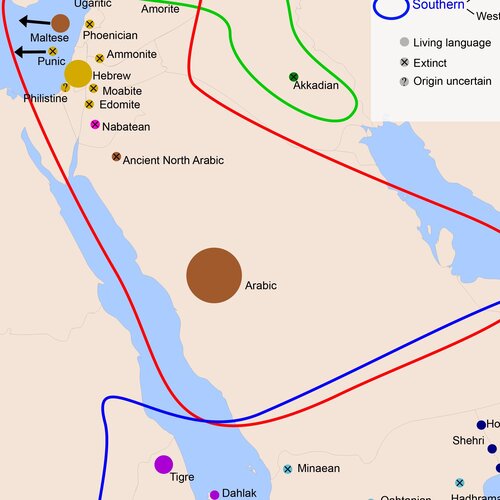
On the method of Hebrew Linguistics and the embedding of Hebrew in the Semitic language family
Thematically, this includes the questions of general linguistics and its methods and the application to Hebrew Linguistics. Hebrew within the Semitic (more broadly defined as Afro-Asiatic and more narrowly defined as Hamito-Semitic and even more narrowly defined as Canaanite-Aramaic) language family, the structure of the Hebrew language.
Courses and seminars on this topic are part of the Hebrew Linguistics curriculum at the university, but are also offered in the Department of Near Eastern Languages and Cultures. Special mention should be made of "Introduction to the Semitic Languages" at the Institute of Semitic Studies.
It would be advantageous to learn another Semitic language in addition to Hebrew, such as Akkadian (see the courses offered by the Institute of Assyriology), Ugaritic (see the courses offered by the Institute of Old Testament Studies) or Phoenician, but above all Aramaic (see below for focus areas II and III) and Arabic (see below for focus areas IV and V).
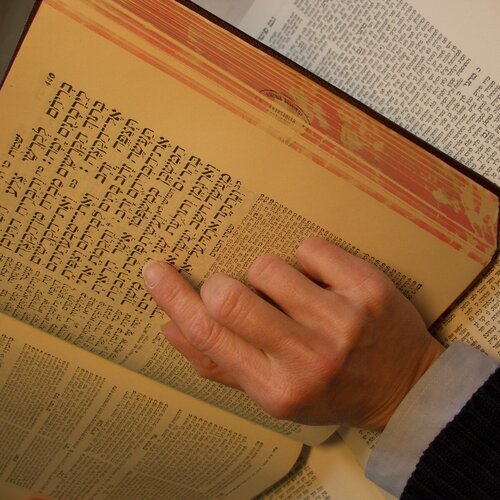
Classical Hebrew
Thematically, this includes the epigraphic Old Hebrew from the 10th century onwards (first written fixation) and above all the Biblical Hebrew (with the three stages Old Hebrew, "Late Biblical Hebrew (LBH)": Middle Hebrew1 and Middle Hebrew2 (= pre-rabbinic Hebrew), the recording of the dialects (including North and South Hebrew) and the delimitations and correspondences with Aramaic. The problems of the Hebrew pronunciation traditions of the pre-Masoretic and non-Masoretic (such as Samaritan, "Qumran" Hebrew) and Masoretic periods: Tiberian, Babylonian, Palestinian, and the beginning of Masoretic Hebrew linguistics. Problems of lexicography, etymology, eponymy, the complexity of biblical Hebrew word and sentence syntax; work with unpunctuated manuscripts in biblical Hebrew and pre-rabbinic Hebrew from the 3rd century before to the 2nd century after outside the biblical "canon".
The study of the Hebrew Linguistics of this period is in the service of biblical studies and history. Biblical scholarship is not possible without this study. It is therefore obligatory. The same applies to the study of the history of ancient Israel, including Diaspora Judaism.
An introduction to the Aramaic language is best done via Biblical Aramaic and/or via the Jewish Aramaic texts from Egypt (such as Elephantine) and Palestine (Dead Sea) and/or via the Aramaic language of the Targumim and/or via Old Syriac (see below on Focus III).
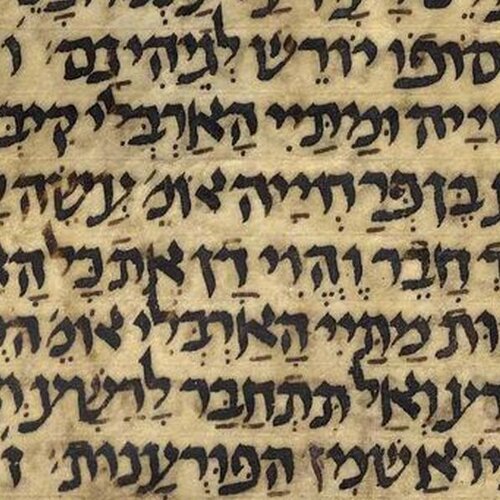
Rabbinic Hebrew
This refers to the Hebrew of the Tannaitic period (up to around 200 CE) and the Amoraic period (up to around 600 CE) = Mishneh1 and Mishneh2. Thematically, this also includes pre- or proto-Mishneh Hebrew in literary and non-literary texts, the transmission of Mishneh (dialects?), the influence of Greek and Aramaic and the introduction to Hebrew epigraphy (inscriptions, manuscripts, codices, genizot, etc.). The study of Hebrew Linguistics of this period is obligatory, especially for the study of rabbinic literature and the Talmud.
In addition, the student needs a sound knowledge of the Palestinian (=Western) and Babylonian Aramaic of the Talmudim (=Eostaram.). If there is no introduction to these Aramaic languages, an introduction to the related neighboring Aramaic languages can be used instead: For Ostaram. especially Syro-Aramaic = Old Syriac or Mandaean (Old Syriac is currently offered every summer semester at the Institute of Semitic Studies. The course extends over 2 semesters with a final exam and an obligatory reading course in the 3rd semester), or the Neo-Aramaic of the modern era of the Jacobite Christians of Tur-'Abdin (offered by the Institute of Semitic Studies). For Western Aramaic, the Aramaic of the Dead Sea manuscripts (in the courses offered by the Institute of Semitic Studies), but also the New Western Aramaic of the Christians in Ma'lula (in the courses offered by the Institute of Semitic Studies). However, the courses on New Aramaic (New Eastern and New Western Aramaic) require knowledge of Old Syriac.
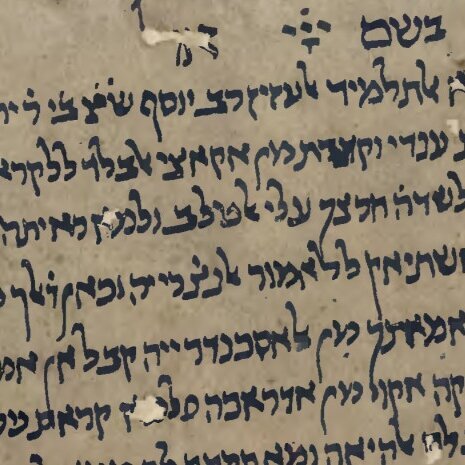
The Hebrew of the Middle Ages
Thematically, this includes: The epigraphic Hebrew of the MA in Europe and Asia (including Jewish funerary inscriptions), problems of imitation of Biblical and Rabbinic Hebrew, the influence of Judeo-Arabic (translation literature), the language of Hebrew poetry (Piyyutim), the beginning of Hebrew Linguistics (the Arabic-Hebrew grammarians). Diatopic: Orient (including Karaites, Samaritans), Spain, Italy, France, Germany (Ashkenazic).
Compulsory for the study of Jewish history and philosophy and also for biblical studies and Talmud studies.
By arrangement, an introduction to Judeo-Arabic can be given at the Institute for Semitic Studies, otherwise an introduction to the written Arabic language of the present is recommended.
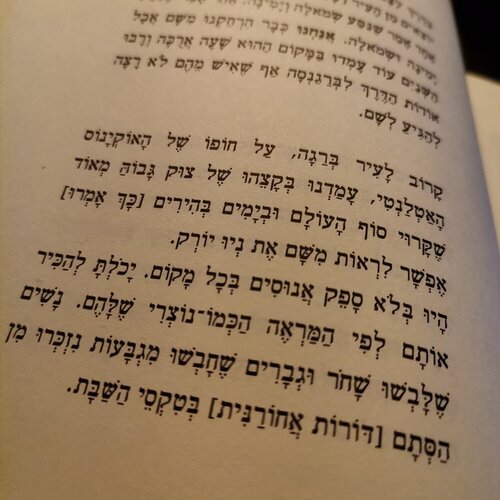
The Hebrew of Modern Times
Thematically, this includes the renaissance efforts of Hebrew in the 19th century in Europe, and especially in Israel. Linguistic (including didactic) problems of modern Hebrew, the work of the language academy. Phenomena of Hebrew grammar in historical comparison. Present-day Hebrew language traditions (survival of older traditions) in Europe and Asia.
Compulsory for the study of Jewish history, philosophy and, above all, literature, as well as for biblical studies and Talmud studies.
Language studies in Israel should not be limited to learning modern Hebrew, but should also include Palestinian Arabic. An introduction to Palestinian Arabic can also be given by arrangement at the Institute of Semitic Studies.

